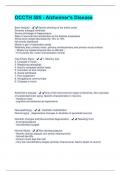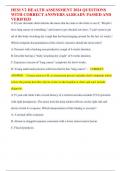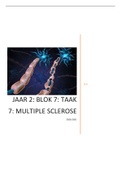Exam (elaborations)
OCCTH 585 - Alzheimer's Disease Questions And Answers Already Graded A+
- Course
- Institution
Brain Atrophy - ️️Severe shrinking of the entire cortex Severely enlarged ventricles Severe shrinkage of hippocampus Rate of neuronal loss accelerates as the disease progresses Whole brain weight decreased by 10% to 19% Not evenly distributed Mostly in gyri of association areas Relativel...
[Show more]





